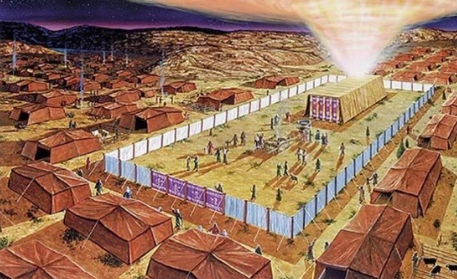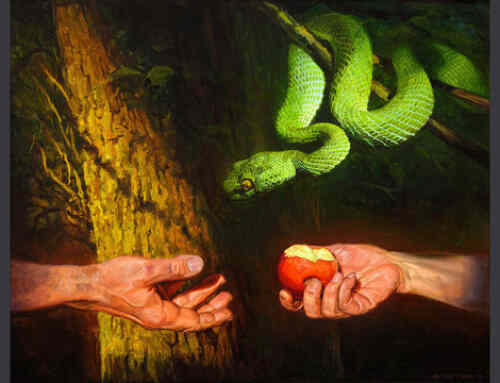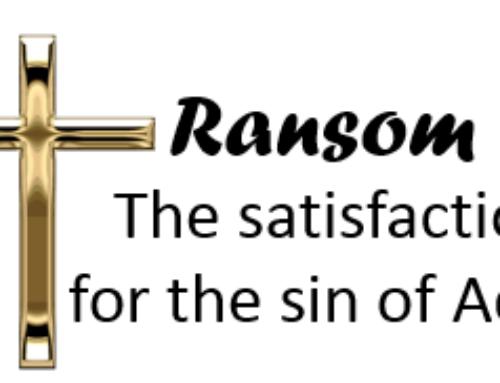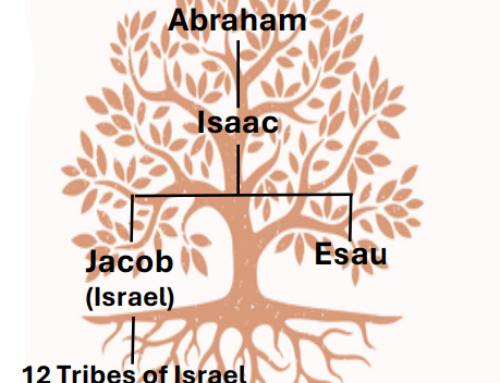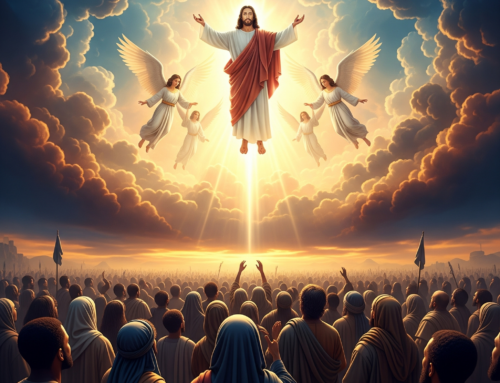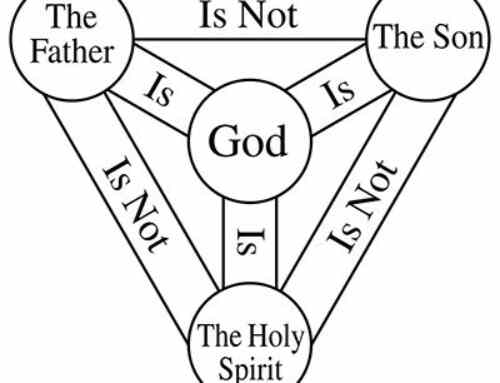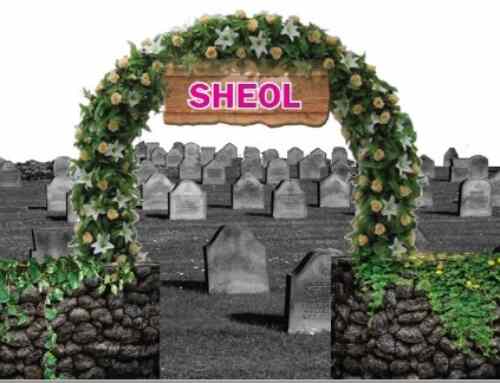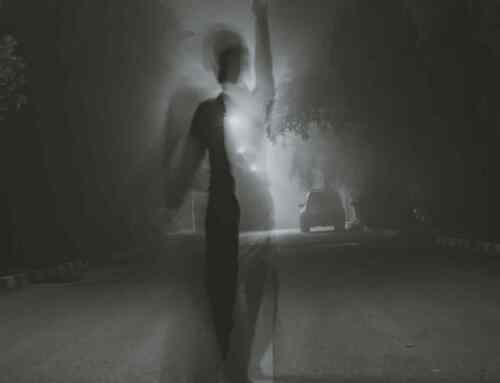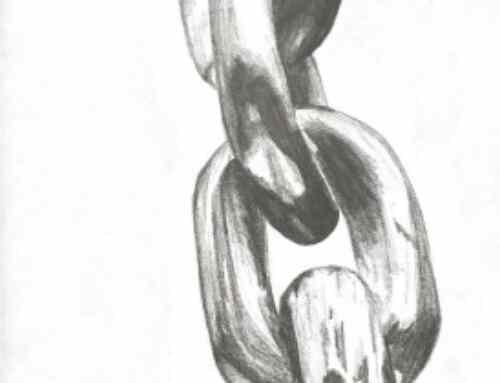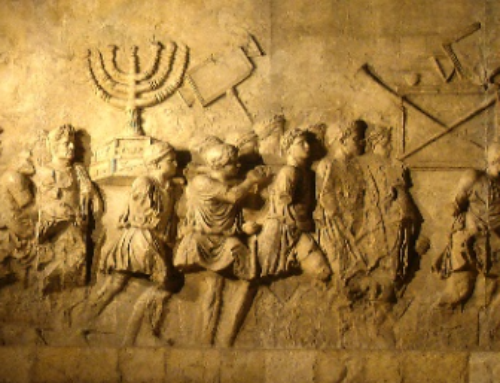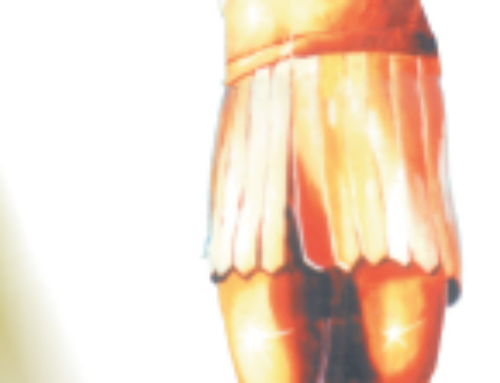The Tabernacle
Goal of the Study: To learn about the details of the Tabernacle. WHY were details of its construction important?
WHY are its types and shadows important to Christians?
Additional references: Tabernacle Shadows of the “Better Sacrifices”
 General Understanding of the Tabernacle
General Understanding of the Tabernacle
- The Tabernacle was a meeting place between God and the Israelites as they traveled through the wilderness.
- Very specific details were given to Moses for the construction, placement and exterior and interior furniture.
- The specifics illustrate significant heavenly things given to believers in the Gospel Age.
- The Tabernacle was given by God as a “shadow” or “type”, or illustration of heavenly things.
- Hebrews 8:5 “who serve a copy and shadow of the heavenly things, just as Moses was warned by God when he was about to erect the tabernacle…”
- Hebrews 10:1 “For the Law, since it has only a shadow of the good things to come and not the very form of things, can never, by the same sacrifices which they offer continually year by year, make perfect those who draw near.”
- In the Tabernacle, we have a “shadow” of our Lord’s life. We also see a progression of the Christian’s life—coming from the world, repentance, full dedication to the Lord, and finally, if faithful, resurrection to a spiritual nature.
What are God’s specific instructions given to build the Tabernacle?
In Exodus 25–40 we find the details of coverings, curtains (veils), walls, altars, metals, craftsmanship, etc. for the construction of the Tabernacle.
- Exodus 25:8–9 “Let them construct a sanctuary for Me, that I may dwell among them. According to all that I am going to show you, as the pattern of the tabernacle and the pattern of all its furniture, just so you shall construct it.”
- Exodus 39:43 “And Moses examined all the work and behold, they had done it; just as the LORD had commanded…”
Where was the Tabernacle to be located and what surrounded it?
The Israelites and the 12 tribes were to pitch their tents and camp on the four sides of the Tabernacle, north, south, east and west.
- Numbers 2:2 “…they shall camp around the tent of meeting at a distance.”
The camp on all sides of the Tabernacle represents the whole world of mankind being outside of the knowledge of God. Everything that was performed inside the court by the Levites could not be seen from the outside.
- 1 Corinthians 2:14 “But a natural man does not accept the things of the spirit of God, for they are foolishness to him…”
The Court
The place called the “Court”, represents the first stage of Christian development, the “calling” stage (Mathew 22:14); the condition of being merely “believers.”
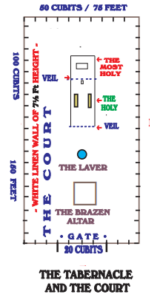 THE OUTER CURTAIN – Exodus 27:9–19
THE OUTER CURTAIN – Exodus 27:9–19
- The Court was 150 feet by 75 feet.
- The curtain was 7½ feet high. (man could not look over it).
- The curtain separated the Court from the people.
- The curtain was made of white linen.
- The embroidered gate was on the east side.
THE GATE
The only entrance into the Tabernacle was through the Court’s gate. Jesus said he is the gate. That “gate” or “door” or “way” to enter the Tabernacle signifies Jesus Christ. and it is only through faith in him that any man can “enter” into the things of God!
- John 10:9; 14:6 “I am the door.” “I am the way.”
- John 14:6 “…no one comes to the Father but through me.”
The white linen curtain represents the holiness and righteousness of Jesus. Those white walls signify how a sinner, when he places his faith in Jesus, receives a “covering” for his sins or imputed justification from his sins.
The colors of the yarn on the “gate” signify the characteristics of Jesus:
Scarlet: blood—ransom
Blue: God’s faithfulness
Purple: royalty—Jesus as King of Kings
Furniture in the Court
BRAZEN ALTAR (or Altar of Burnt Offering)
- Exodus 27:1–8 “and thou shall make an altar of shittim wood.”
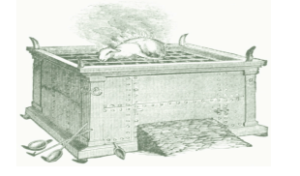
- It was made of wood overlaid with copper or brass.
- 6.6 feet square and 4 feet high.
- A place for animal sacrifices.
- After passing through the “gate” into the Court, the first thing to catch one’s attention was this large altar.
- So too, after having shown faith in the Lord Jesus, the first thing that catches the believer’s attention is the awesome sacrifice of Jesus on the cross of Calvary. Jesus sacrificed his life; he paid the ransom price to offer atonement.
- 1 Timothy 2:5,6 “For there is one God, and one mediator also between God and men, the man Christ Jesus, who gave himself as a ransom for all, the testimony given at the proper time.”
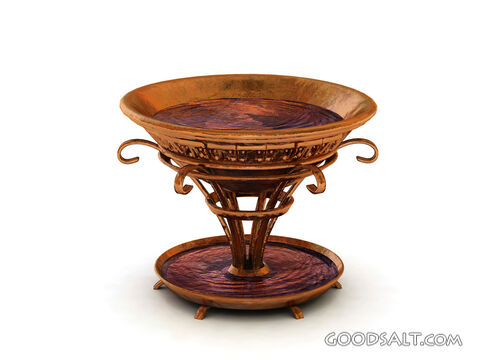 LAVER
LAVER
- Exodus 30:17–21 “Aaron and his sons shall wash their hands and their feet from it.”
- It was made of brass.
- Aaron the High Priest and his sons the under priests were commanded by God to wash their hands and feet at this laver before any service at the brazen altar or within the holy of the Tabernacle. If they failed to do this, they would die.
- After the believer sees the great sacrifice of Jesus on the Brazen Altar, he realizes his sins and his need to be washed, washed by the word of God.Studying God’s word begins to cleanse the believer, changing their actions (hand) and walk of life (feet).
- Ephesians 5:26 “…having cleansed her by the washing of water with the word.”
Inside the Court was the Tabernacle structure that was divided in two parts: the Holy and the Most Holy
The Holy
- The entrance to the Tabernacle building had a “Door” or curtain, called the “first veil”, leading to the Holy.
- Exodus 26:36 “You shall make a screen for the doorway of the tent of blue and purple and scarlet material and fine twisted linen, the work of a weaver.”
 Only priests were allowed to enter the Holy through this veil. The Levites were not permitted to enter.
Only priests were allowed to enter the Holy through this veil. The Levites were not permitted to enter.
If they tried, they would die.- These priests represent the second stage of Christian development— the “chosen” stage, or the condition
of being “followers” of Jesus. These have surrendered their will to the Lord (Matthew 16:24) and have entered into full consecration to do the will and service of God. - This signifies the means by which a “believer” becomes a “follower”; how the “called” become “chosen,” by consecration and a “covenant by sacrifice.” Psalms 50:5
- Stooping to enter under this veil is also the point of Christian baptism, the “one baptism.” Ephesians 4:5
Furniture in the Holy
There were three items of furniture in the Holy: the Golden Candlestick, Table of Shewbread and Golden Altar.
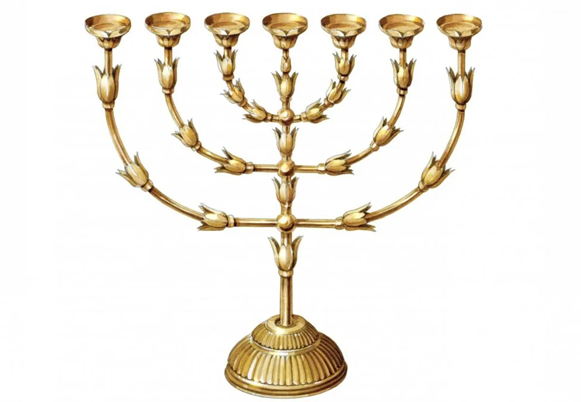 GOLDEN CANDLESTICK
GOLDEN CANDLESTICK
- Exodus 37:17–24 (kjv) “…the candlestick of pure gold…”
- Pure gold, of beaten work.
- Seven branches with bowls shaped like almonds, fruits and flowers.
- It provided the only light in the Holy.
- The Christian who is consecrated has a very special light.
- 1 Peter 2:9 “But you are a chosen race, a royal priesthood, a holy nation, a people for God’s own possession, so that you may proclaim the excellencies of Him who has called you out
of darkness into His marvelous light.”
- 1 Peter 2:9 “But you are a chosen race, a royal priesthood, a holy nation, a people for God’s own possession, so that you may proclaim the excellencies of Him who has called you out
- The lamps were filled with oil representing the Holy Spirit and enlightenment of the truth.
- John 16:13 “How when it, the spirit of truth is come, it will guide you into all truth; …and it will shew you things to come.” (Examples: prophecy, the divine plan of God, meaning of symbols, types, parabolic language.)
- The seven branches represent the seven churches in Revelation chapters 2–3.
- Revelation 1:13 “And in the midst of the seven candlesticks one like unto the son of man, clothed with a garment down to the foot…”
- The Church is developed through tribulation or “beaten work” but develops character like fruits and flowers, beautiful from God’s viewpoint.
- Acts 14:22 “…and exhorting them to continue in the faith, and that we must through much tribulation enter into the kingdom of God.”
THE TABLE OF SHEWBREAD
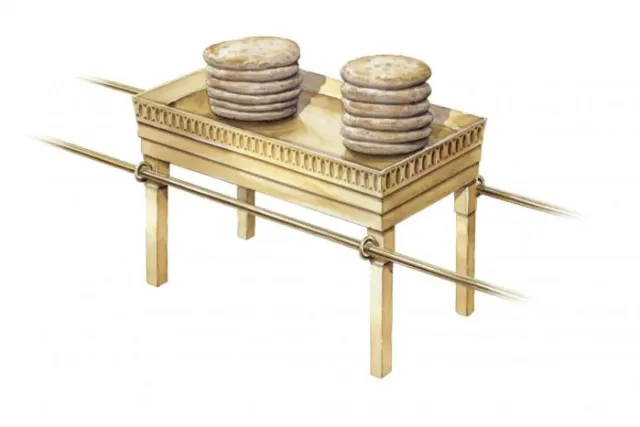 Leviticus 24:5, 6 “And thou shalt take fine flour, and bake twelve cakes thereof: two tenth deals shall be in one cake. And thou shalt set them in two rows, six on a row, upon the pure table before the LORD.”
Leviticus 24:5, 6 “And thou shalt take fine flour, and bake twelve cakes thereof: two tenth deals shall be in one cake. And thou shalt set them in two rows, six on a row, upon the pure table before the LORD.”- The unleavened bread represents pure truth renewed every Sabbath.
- There were two rows of six cakes, possibly representing the 66 books of the Bible.
- Only the priest could eat the bread.
- Spiritual truths can be understood by the priestly class, those “chosen” among Christians, presenting their “bodies as living sacrifices.”
THE GOLDEN/INCENSE ALTAR
- Exodus 40:26–27 “Then he placed the gold altar in the tent of meeting in front of the veil; and he burned fragrant incense on it, just as the LORD had commanded Moses.”
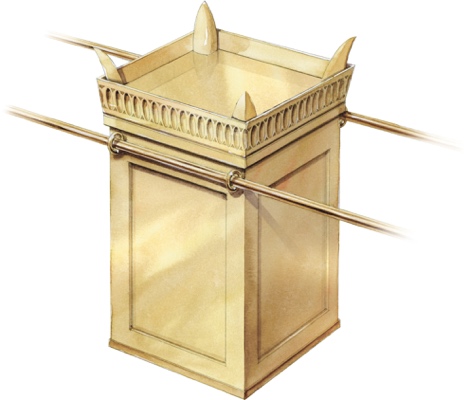 The handfuls of crushed incense the priest carried into the Holy, gave forth a fragrance and smoke which filled the Holy and even went into the Most Holy. The perfumed fragrance and smoke represent the character and walk of life that is manifested and the fruit of the spirit exhibited; which not only fills the Holy, seen and appreciated by the “fellow priests” (the brethren), but even enters into the Most Holy and is seen and approved by God Himself!
The handfuls of crushed incense the priest carried into the Holy, gave forth a fragrance and smoke which filled the Holy and even went into the Most Holy. The perfumed fragrance and smoke represent the character and walk of life that is manifested and the fruit of the spirit exhibited; which not only fills the Holy, seen and appreciated by the “fellow priests” (the brethren), but even enters into the Most Holy and is seen and approved by God Himself!- This represents the daily sacrifices of a consecrated Christian, living up to “handfuls” of incense, that is, each one’s own capacity, based on their talents, even as Jesus did.
- Ephesians 5:2 “And walk in love, just as Christ also loved us and gave himself up for us, an offering and a sacrifice to God as a fragrant aroma.”
- These priests had the privilege of offering incense at the Golden Altar. This Golden Altar shows the privilege of sacrifice, including the heartfelt sacrifice of our lips in prayer, praise and thanksgiving to God.
- Hebrews 13:15 “Through Him then, let’s continually offer up a sacrifice of praise to God, that is, the fruit of lips praising His name.”
- Revelation 8:3 “Another angel came and stood at the altar, holding a golden censer; and much incense was given to him, so that he might add it to the prayers of all the saints on the golden altar which was before the throne.”
- Revelation 5:8 “…holding a harp and golden bowls full of incense, which are the prayers of the saints.”
- The hot coals are the trials and testings of this life.
The Most Holy
- Exodus 26:31–33 “You shall make a veil of blue and purple and scarlet material and fine twisted linen; it shall be made with cherubim, the work of a skillful workman. You shall hang it on four pillars of acacia overlaid with gold, their hooks also being of gold, on four sockets of silver. You shall hang up the veil under the clasps, and shall bring in the ark of the testimony there within the veil; and the veil shall serve for you as a partition between the holy place and the holy of holies.”
- Once a year, on the Atonement Day, only the high priest entered the Most Holy bearing the blood of sacrifice to apply on the Mercy Seat (on the Ark of the Covenant). If he did not fulfill all the necessary regulations before entering, he would die upon entering the Most Holy.
- A very thick, heavy curtain or veil separated the Holy from the Most Holy, the “second veil”.
- We remember the veil or curtain that tore in the Temple when Jesus died. Matthew 27:51; Luke 23:45
- The Most Holy represents the heavenly condition. Hebrew 6:19
- There were three “entrances” to reach the Most Holy representing the progression of the called,
chosen and faithful.
1. The gate from the court
2. The veil into the Holy
3. The veil into the Most Holy - How does Jesus relate to these three entrances?
- John 14:6 “Jesus said to him, “I am the way, and the truth, and the life; no one comes to the Father but through me.”
- John 6:44 “No one can come to me unless the Father who sent me draws him; and I will raise him up on the last day.”
- It is Jesus who leads and guides the Christian along every step of the their developmental progress:
- 1. From a “believer” (the “way”—the gate)
- 2. To a “follower” (the “truth”—the veil of the Holy)
- 3. To finally receive the “first resurrection” (the divine nature).
- Passing under the second veil leading into the Most Holy signifies the death of the human body.
- 1 Corinthians 15:50, 51 “Now I say this, brethren, that flesh and blood cannot inherit the kingdom of God; nor does the perishable inherit the imperishable. Behold, I tell you a mystery; we will not all sleep, but we will all be changed.”
- The Most Holy in the Tabernacle symbolizes the presence of God, and for the Christian, signifies attaining the ultimate hope of the divine nature and eternal life in God’s immediate presence.
Two Cherubim (on the second veil)
- These were representations of God’s great love for the follower of Jesus.
- John 16:27 “The Father Himself loves you, because you have loved me and have believed…”
- These show God’s great power. He is the Almighty!
- Romans 8:31(KJV) “What shall we then say to these things? If God be for us, who can be against us?”
Furniture in the Most Holy
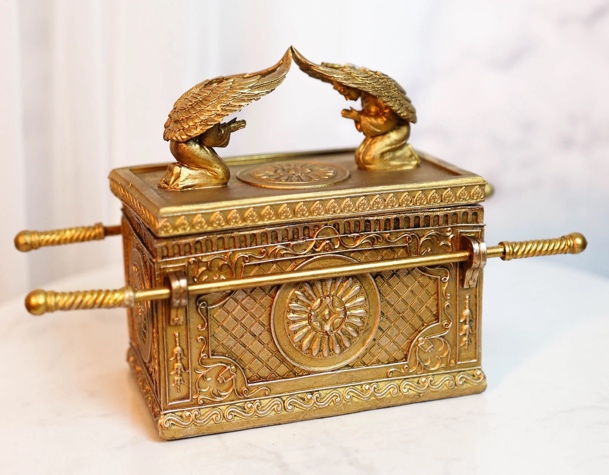 THE ARK OF THE COVENANT
THE ARK OF THE COVENANT
- Hebrews 9:3–5 “The ark of the covenant overlaid round about with gold, wherein was the golden pot that had manna, and Aaron’s rod that budded, and the tables of the Covenant and over it the cherubim of glory overshadowing the mercy seat…”
- Exodus 37:1–9 “And Bezaleel made the ark of shittim wood: 3¾ feet by 2¼ feet. And he overlaid it with pure gold within and without…”
- The Ark of the Covenant was a rectangular box with a lid made of gold. Out of the same gold was carved two cherubims. Both had their eyes fixed at a point in the center of the lid called the Propitiatory or Mercy Seat; both had their wings uplifted as
if ready to fly. - The Mercy Seat was where the High Priest would sprinkle the blood of the Atonement Day sacrifices.
- The Most Holy is a representation of the final heavenly condition of the Church class, the “body” of Christ.
- The Ark of the Covenant is a glorious representation of our heavenly Father and how we understand and comprehend Him through His divine attributes of love, justice, wisdom and power.
- The Mercy Seat represents the justice attribute of God. Blood signifies life. Leviticus 17:11 The sprinkling of the blood on the Mercy Seat by the High Priest showed the satisfaction of justice.
- Within the Ark were three items—the Golden Bowl (or Pot) of Manna, Aaron’s Rod that Budded and the Two Stone Tables of the Law. Hebrews 9:4
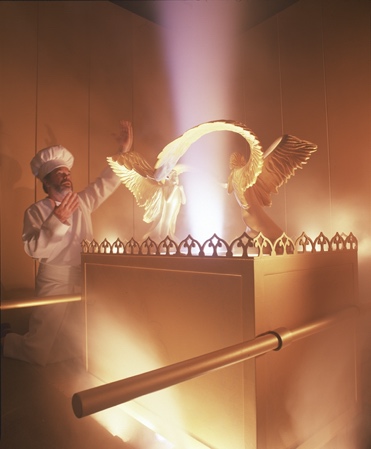 SHEKINAH LIGHT
SHEKINAH LIGHT
- Upon the Mercy Seat and between the cherubim was a supernatural light. In Hebrew, it is called the Shekinah light.
- This was the only light in the Most Holy.
- It represents the divine presence of the heavenly Father.
- Isaiah 37:16 “The God of Israel dwellest between the cherubims.”
- 1 John 1:5 “God is light.”
CONTENTS OF THE ARK
GOLDEN BOWL OF MANNA
- Exodus 16:32–34 “This is what the LORD has commanded, Let an omerful of it be kept throughout your generations, that they may see the bread that I fed you in the wilderness.”
- This manna was incorruptible, unlike the manna the Israelites received in the wilderness that would rot if kept until the next day (except for the Sabbath day). This special incorruptible manna represents the plane of life that is incorruptible and immortal—the divine nature!
- Revelation 2:17 “To him who overcomes, to him I will give some of the hidden manna…”
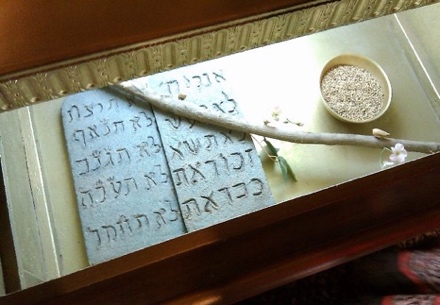 AARON’S ROD THAT BUDDED
AARON’S ROD THAT BUDDED
- Numbers 17:8 “Now on the next day Moses went into the tent of the testimony; and behold, the rod of Aaron for the house of Levi had sprouted and put forth buds and produced blossoms, and it bore ripe almonds.”
TWO STONE TABLES OF THE LAW
- Deuteronomy 31:26 (KJV) “Take this book of the Law and put it in the side of the ark of the covenant of the LORD your God…”
- However, after the Ark of the Covenant was brought into Solomon’s Temple, only the two tablets remained.
- 1 Kings 8:9 (KJV) “There was nothing in the ark save the two tables of stone, which Moses put there at Horeb, when the LORD made a covenant with the children of Israel, when they came out of the land of Egypt.”
- “[The] Golden bowl of manna, a type of immortality, and the budded rod of the blessings, fruitfulness and privilege of service of the Levites, will end as types in the present dispensation.” Reprint 3283
- Once the Church is complete and transitions from a wilderness condition (walking in the flesh on this earth to a heavenly reward), there will no longer be any chance of anybody attaining immortality and suffering for Christ, but the Law of God will remain forever for everybody to obey Him.
The Tabernacle is far more than an ancient structure—it’s a powerful spiritual blueprint that reveals God’s desire to dwell with His people and lead them into deeper relationship with Him. Every detail, from the gate to the Most Holy, reflects a step in the believer’s journey—from redemption through Christ to full communion with God. Studying the Tabernacle opens our eyes to the beauty of God’s plan, His love, and our calling to walk a holy path with purpose,
faith, and hope.



